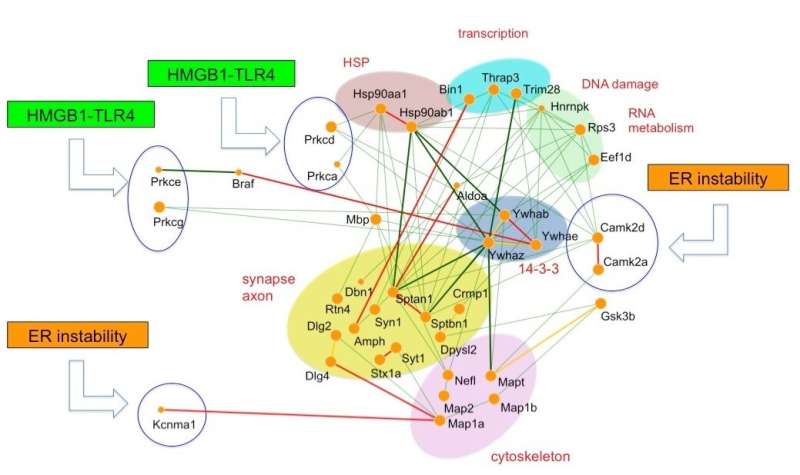One protein to rule them all: A central target for treating dementia

Dementia has many faces, and because of the wide range of ways in which it can develop and affect patients, it can be very challenging to treat. Now, however, using supercomputer analysis of big data, researchers from Japan were able to predict that a single protein is a key factor in the damage caused by two very common forms of dementia.
In a study published this month in Communications Biology, researchers from Tokyo Medical and Dental University (TMDU) have revealed that the protein HMGB1 is a key player in both frontotemporal lobar degeneration and Alzheimer disease, two of the most common causes of dementia.
Frontotemporal lobar degeneration can be caused by mutation of a variety of genes, which means that no one treatment will be right for all patients. However, there are some similarities between frontotemporal lobar degeneration and Alzheimer disease, which led the researchers at Tokyo Medical and Dental University (TMDU) to explore whether these two conditions cause damage to the brain in the same way.
"Alzheimer disease pathology and frontotemporal lobar degeneration often coexist in the postmortem brain," explains lead author of the study Meihua Jin. "Because of this overlap, we wanted to investigate whether the molecular mechanisms of disease were also similar."
To do this, the researchers used a sophisticated technique called molecular network analysis to take a snapshot of which proteins are expressed, and to what degree, in mice that had been genetically engineered to mimic Alzheimer disease and frontotemporal lobar degeneration. Supercomputer analysis of these protein networks was performed in mice of different ages to capture a dynamic picture of how they changed over time.
"The results were surprisingly clear," says senior author Hitoshi Okazawa. "We found that the core protein–protein interaction networks in Alzheimer disease and in frontotemporal lobar degeneration were highly similar, sharing almost 50% of core nodes."
Further analysis of these core protein nodes predicted that signaling through HMGB1, which is a critical factor in Alzheimer disease, also plays a key role in frontotemporal lobar degeneration. Importantly, this result was confirmed by the researchers, who found that treating mice with frontotemporal lobar degeneration with an antibody to HMGB1 improved their long-term memory, short-term memory, and spatial memory.
"Our new method successfully predicted and identified HMGB1 as a key target for treating patients who have dementia due to frontotemporal lobar degeneration, regardless of the genetic basis of the disease," says Jin.
Given the fact that the mice recovered their memory after several months of treatment with the anti-HMGB1 antibody, it is possible that treatments targeting this protein could actually reverse damage in patients with frontotemporal lobar degeneration. Because similar molecular changes are seen in many different types of dementia, a treatment based on this antibody could be effective in a wide range of patients.
More information: Meihua Jin et al, Prediction and verification of the AD-FTLD common pathomechanism based on dynamic molecular network analysis, Communications Biology (2021). DOI: 10.1038/s42003-021-02475-6





















